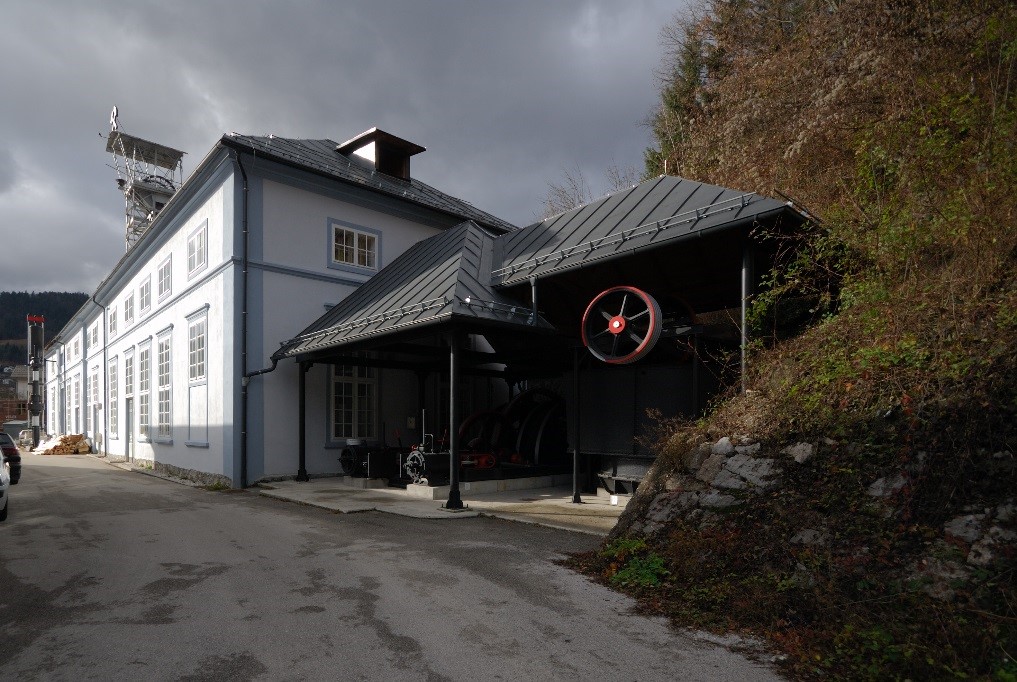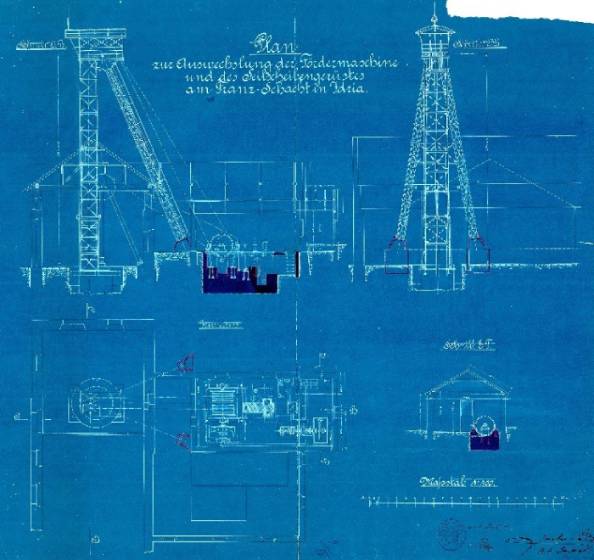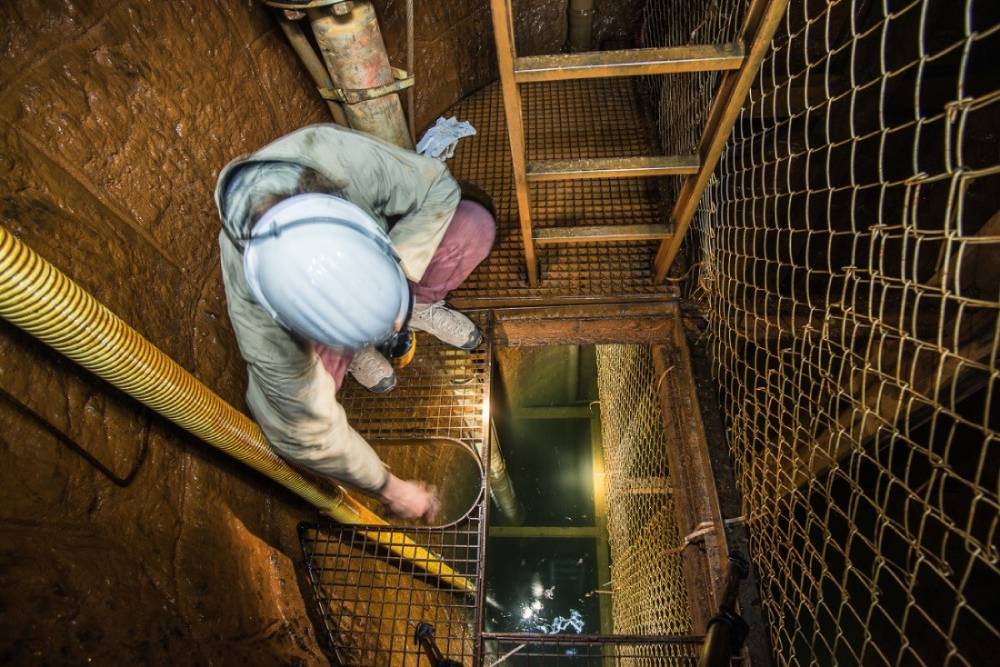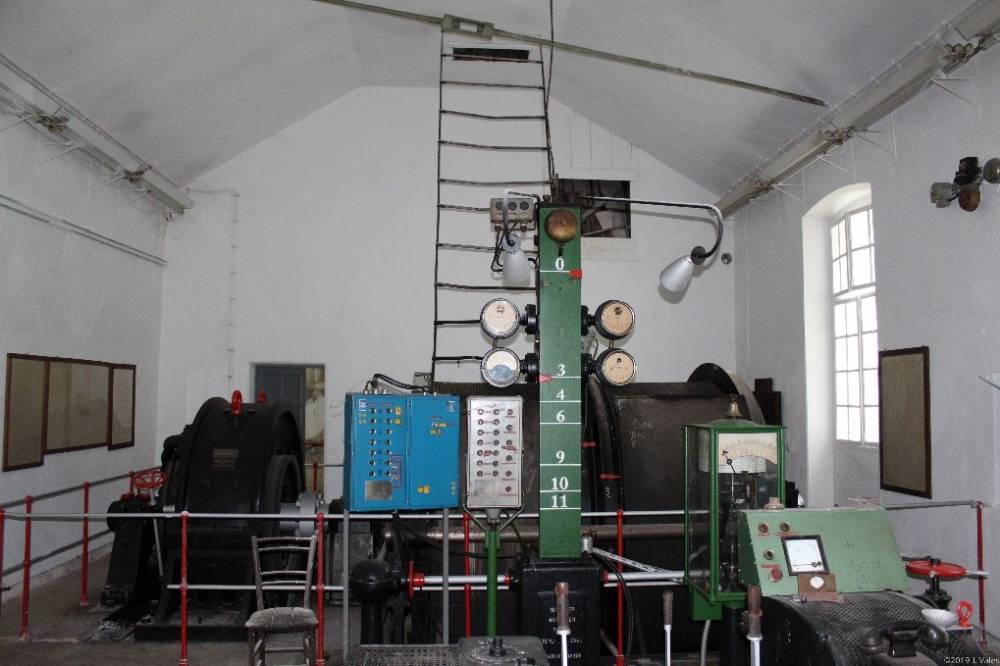Francis' Shaft is one of the oldest preserved facilities in the mine and also one of the most important shafts during the operation of the mine. Initially named Franzisci Schacht after the Austrian Emperor Francis II, it was renamed »jašek Borba« (Battle shaft) after World War II. Locals still refer to the area around the shaft as "v Frančiškah." The entrance building of the shaft houses a preserved electric winding engine from the Siemens-Schuckert factory, dating back to 1906, which started operating in 1911.
Under the second six-year contract signed between Spain and the Austrian Empire for the supply of large quantities of mercury from the Idrija Mercury Mine to Spain, the Idrija Mercury Mine began to construct the new Francis' Shaft in 1792 on the northern outskirts of the mining area, reaching the depth of Level XI. During the period of mercury supply to Spain (1786-1798), the excavation of richer ore deposits increased significantly. The annual amount of mercury extracted during this time ranged from 580 to 670 tons.

Photo: Jani Peternelj, archive CUDHg Idrija

Photo: Plan of hoisting tower and machine for the Francis' Shaft, 1911. Historical Archives Ljubljana, Unit in Idrija.
The Austro-Hungarian Monarchy took great care to ensure the successful and modern operation of the Idrija Mine. This is evidenced by the preserved Siemens-Schuckert hoisting engine, which was installed at the Francis' Shaft in the early 20th century. The DC-powered hoisting engine with converter station began to operate in 1911 and was used to export ore and transport miners and materials to Level XI (271.85 metres below the surface).
The capacity of the hoisting engine during the operation of the mine's operation was 8 tons or 6 persons per cage. The travel speed reached 8 m/s for transporting ore and other materials, and 4 m/s for passenger transport. The winding engine was uniquely designed and did not require any replacement spare parts in its 100-year lifespan. The transportation process involved a team consisting of the winding engine operator, a hoisting engine bell ringer, and an attendant.
After 1956, when a cableway was built between Joseph's Shaft, at that time called the Delo Shaft (Work Shaft), and the Separation Plant in the Smelting Plant, all ore exports were redirected to Joseph's Shaft. However, Francis' Shaft remained important for the transportation of timber and the import and export of miners, as 280 miners still entered the mine in that area at that time. The hoisting engine operated until 2007.
After 2007 a modern elevator, manufactured by ThyssenKrupp, was installed in the Frances' Shaft, connecting the surface to Level III at a depth of 122 metres. To operate the elevator, which is designed as a standard elevator in towers or tall storage facilities, only an attendant in the elevator is required. In the shaft access pathway, in addition to ladders, a pipeline is also installed to pump mine water from the Francis' Shaft's pumping station, located 12 metres above Level IX, to the surface (1,800 m³ per day).

Photo: View into Francis' Shaft. Photo by Matej Peternelj, CUDHg Idrija Archives.

Photo: The preserved Siemens-Schuckert exporting machine in the engine room operated continuously for nearly 100 years. Photo: Jan Vales.
The building of the Francis' Shaft was renovated in 2003. Today, it houses a workshop for maintenance of the mine, the archives of the Idrija Mercury Heritage Management Centre and the former Idrija Mercury Mine, the Miner's Rescue station of CUDHg Idrija, a museum engine room with a preserved Siemens-Schuckert electric winding engine, and the Technical Department of the Idrija Municipal Museum with exhibited mining machinery and equipment.
